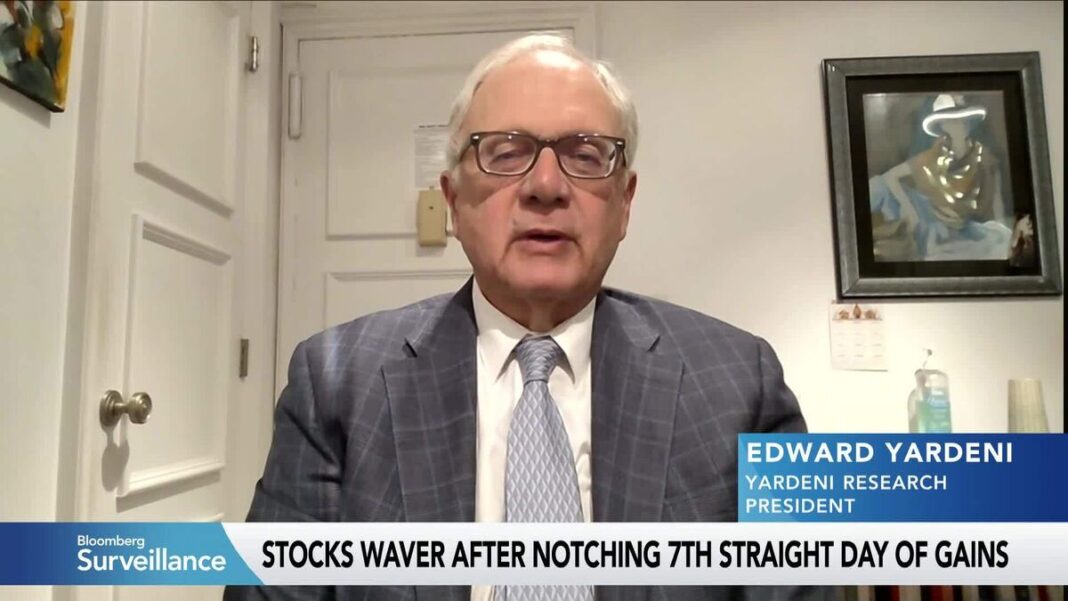Understanding the Market Bubble: Insights from Edward Yardeni
Introduction to Edward Yardeni
Edward Yardeni, president of Yardeni Research, has established himself as a prominent voice in the realm of economic analysis and market forecasting. With a keen ability to dissect complex market phenomena, Yardeni has garnered attention for his predictions and insights. In the latest commentary, he explores a vital topic: the current state of the market and its indicators of a potential bubble. Through a deeper understanding of his perspectives, investors can gain valuable insights into navigating today’s financial landscape.
The Potential Bubble
Yardeni’s assertion that the market might be entering bubble territory raises eyebrows among investors and analysts alike. His analysis hinges on a multitude of factors, including the rapid rise in stock prices, which often signals a disconnect between market valuations and underlying economic fundamentals. This phenomenon is reminiscent of historical bubbles, where rapid price appreciation left investors scrambling when reality ultimately caught up.
He emphasizes that one of the primary indicators of a bubble is the impact of excessive speculation. Investors often chase high returns based on the momentum of stocks rather than the companies’ financial health. This behavior can create an unsustainable rise in asset prices, making the market vulnerable to corrections.
Earnings Growth as a Supportive Factor
Despite his caution regarding bubble signs, Yardeni offers a balanced view by highlighting the robust earnings growth of many companies. His assertion that earnings are “there to continue to drive this bull market higher” serves as a reassurance to investors.
The foundation of any long-term bull market ultimately lies in solid corporate earnings. Yardeni points to reports that show strong financial performance across various sectors, suggesting that companies are well-equipped to sustain their growth in the foreseeable future. This earnings strength provides a crucial buffer against the potential risks of valuation corrections, supporting the market’s upward trajectory.
The Role of Monetary Policy
Another critical aspect Yardeni addresses is the influence of monetary policy on market dynamics. The actions of central banks, especially in maintaining low interest rates, have significantly contributed to the recent market rally. With borrowing costs remaining low, businesses find it easier to invest and expand, ultimately driving economic growth.
However, Yardeni warns that if inflationary pressures continue to build, central banks may need to respond by tightening monetary policy. This shift could potentially disrupt the favorable environment that has supported market growth. The balance central banks must strike between fostering growth and preventing overheating is a delicate one, and its implications for market stability cannot be overstated.
Investor Sentiment and Market Psychology
Yardeni also delves into the psychological factors at play in the financial markets. Investor sentiment can greatly influence market dynamics, often leading to irrational exuberance or undue pessimism. The current wave of optimism, fueled by strong earnings reports and a recovering economy, has led many to embrace riskier investments.
However, Yardeni cautions that sentiment can shift suddenly. A negative event or economic signal could change the tide, leading to rapid sell-offs as fear replaces confidence. Understanding market psychology and its trends is essential for investors aiming to navigate this potentially volatile landscape.
Industry-Specific Insights
Yardeni’s insights extend beyond overarching market trends; he emphasizes the importance of examining specific industries and sectors. Different areas of the economy are rebounding at varying rates, influenced by both external factors (like supply chain issues) and internal dynamics (such as innovation and consumer demand).
For instance, the technology sector has shown remarkable resilience and growth, largely driven by an accelerated digital transformation. Conversely, some traditional sectors are struggling to adapt to changing consumer behaviors and economic conditions. Investors must pay attention to these industry nuances to make informed decisions about where to allocate their resources effectively.
Conclusion on Market Outlook
In light of Edward Yardeni’s analysis, the current market landscape can be understood as a complex interplay of signs of a potential bubble and strong underlying earnings that support ongoing growth. By considering the implications of monetary policy, investor sentiment, and industry-specific conditions, investors can better position themselves to navigate the challenges and opportunities in the evolving market.
Yardeni’s thoughtful insights serve as a reminder of the importance of vigilance in investing, encouraging a nuanced understanding of both risks and opportunities.



